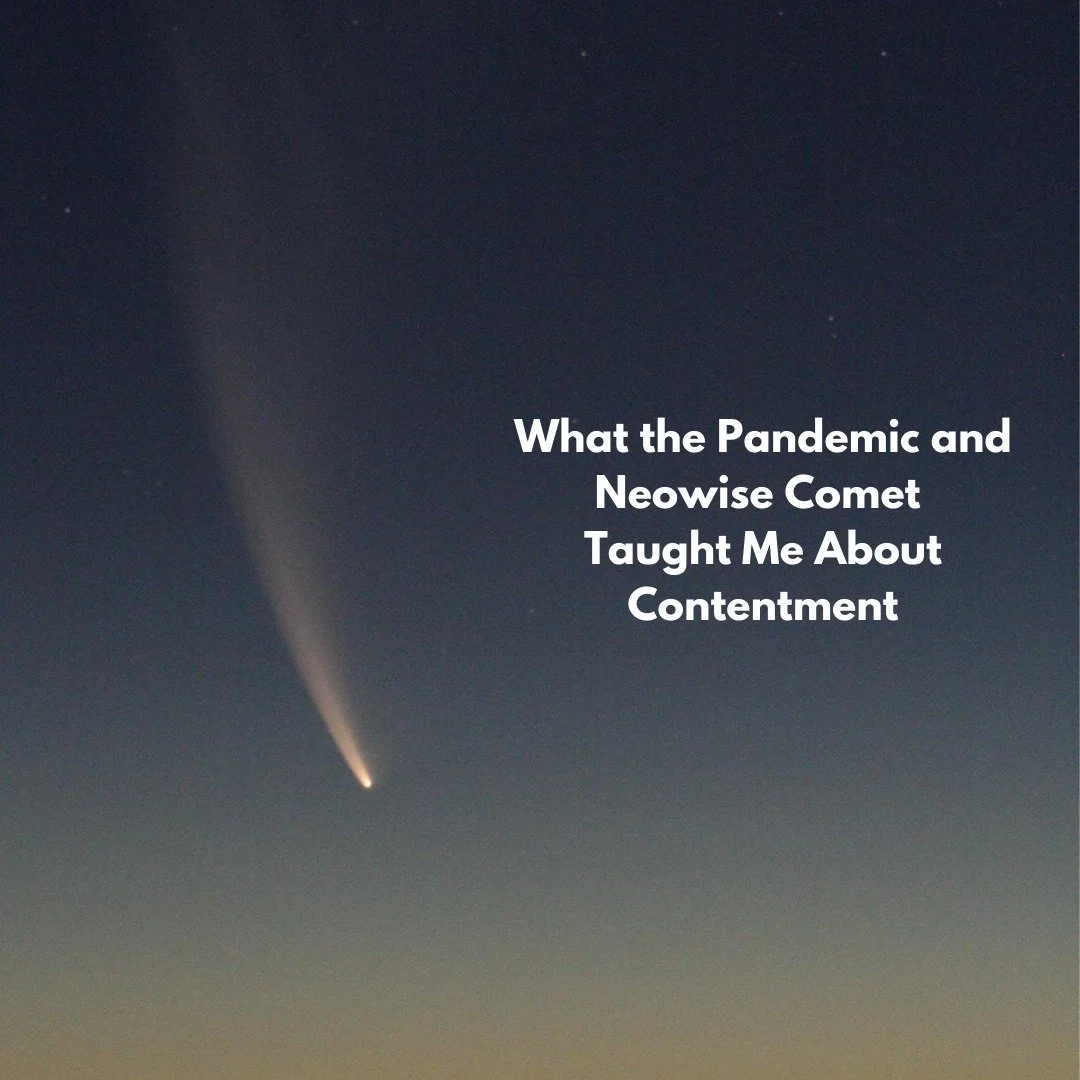What the Pandemic and Neowise Comet Taught Me About Contentment
“I can’t believe I forgot my binoculars!”
I double-checked the backseat, searching under the dog blanket. I unearthed cracker crumbs, dog hair, and granola bar wrappers, but no binoculars. Discouraged, I debated going home, but knew if I did, I would not return to this location, miles from ambient city lights.
Grumbling, I grabbed a water bottle and my phone as I stepped out of the car. With social distancing a priority, I chose a spot on the stone wall far away from six other people at the scenic overlook as they set up expensive cameras, folding chairs, and binoculars. One couple even had a cooler. My mood was not helped as I realized everyone else had come more prepared for viewing the Neowise comet.
The comet was first discovered on March 27, 2020 by NASA’S Near-Earth Object Wide-field Infrared Survey Explorer (NEOWISE), from which it derived its name. My social media posts had been filled for several days with pictures of the comet taken by other sky watchers, stirring my desire to capture my own glimpse before the comet disappeared for 6800 years.
Jupiter was the first light I noticed in the east, heralding the arrival of the night. Arcturus appeared next, followed by a few stars introducing Libra and Scorpius. As the minutes passed, it soon became impossible to name the individual stars, as hundreds, and then thousands, polka-dotted the evening fabric.
“There’s the Big Dipper,” said an elderly man with his fancy camera on a tripod. “The Neowise Comet should be under that.”
“It is supposed to be visible from 8:30 to 11 pm,” said a young woman, checking her phone.
I glanced at my watch. Almost 9.
“There it is,” said the man as he pushed a button on his camera. “It’s playing hide-and-seek with that cloud.
Cameras clicked around me as I squinted to where he pointed to the northwestern horizon. I followed the ladle of the Big Dipper downward, stopping at what appeared to be a fuzzy star. A fuzzy object with a tail! The Comet Neowise!
For the next thirty minutes, the comet continued its peek-a-boo ways with the clouds while a pair of bats dive-bombed over our heads. I was disappointed I had not brought my binoculars but realized that if the global pandemic has taught me anything, it is that life doesn't need to be perfect, to be beautiful—a hard-fought lesson, I want to remember.
With more hours stuck at home, my heart had struggled with discontent, either by the posting of angst by other exhausted people in quarantine—or on the flip side—all the posts of those who had it “better” than I did. A continuous cycle of I saw. I wanted. I tried. I failed. I felt depressed.
“Be content with what you have,” the Bible says in Hebrews 13:5. No binoculars? Ah, but a night under the stars. No great photos? Oh, but a memory tucked in my heart. No comet for 6800 years? Ah, but a fuzzy view today.
An owl hooted in the distance as I focused my eyes heavenward.
This post recently appeared in the SanTan Sun News.
